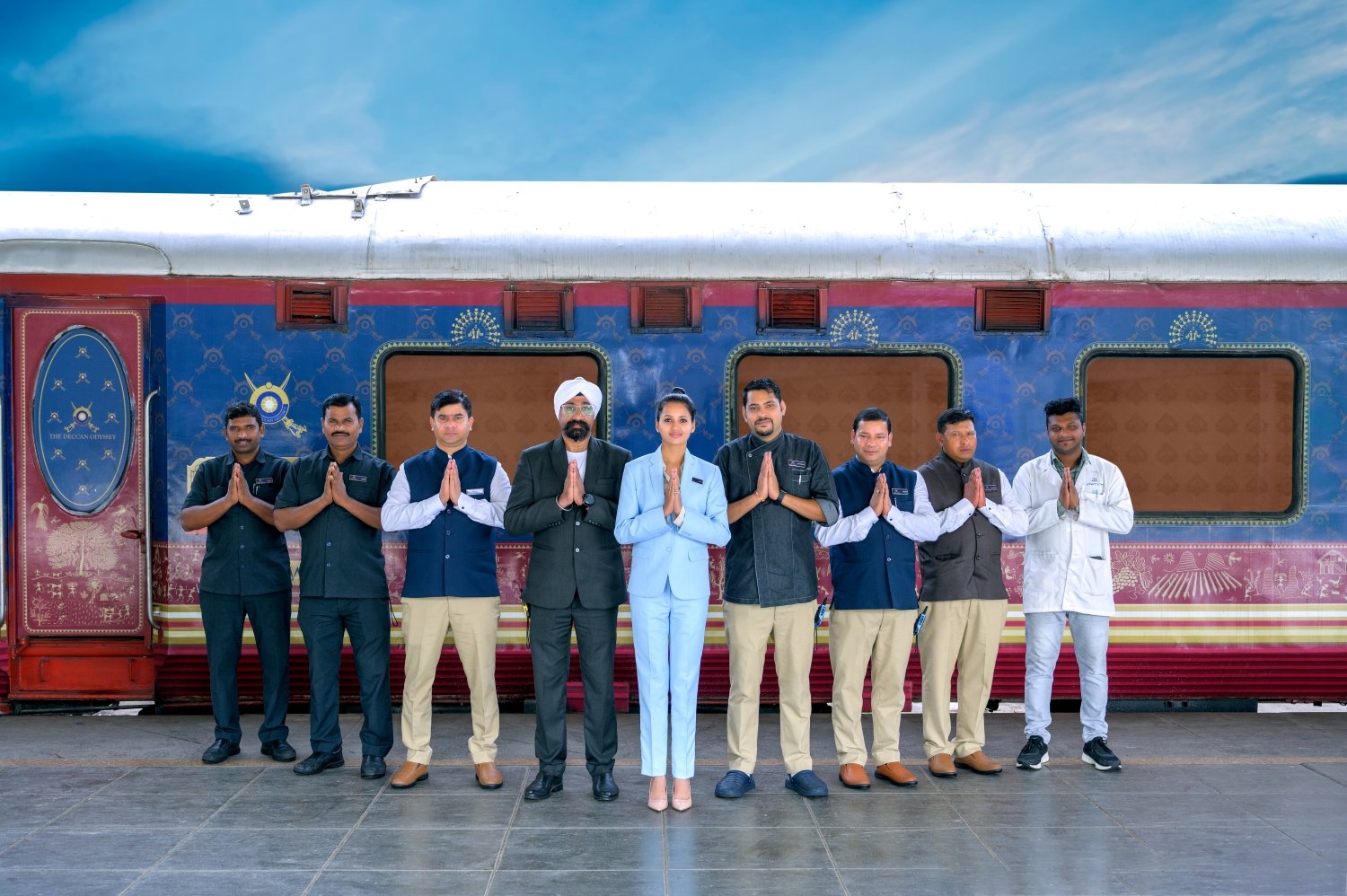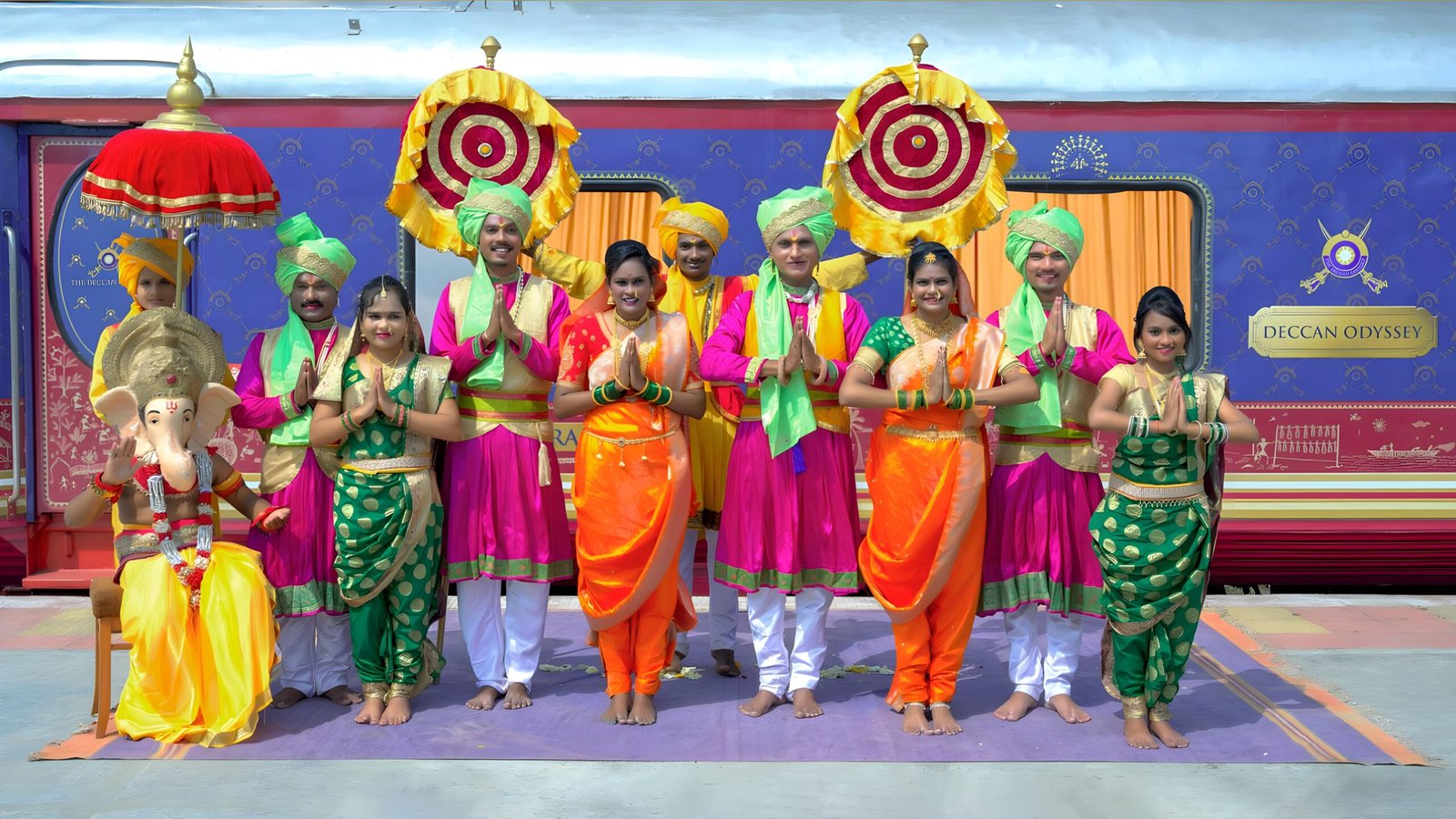Visit the Ajanta and Ellora Caves – Aurangabad with India Luxury Train Deccan Odyssey – The Maharashtra Splendours
India, a land of profound history and rich cultural tapestry, boasts many monumental treasures. Among these, the Ajanta and Ellora Caves in Aurangabad stand as epitomes of ancient craftsmanship and spiritual devotion. These UNESCO World Heritage Sites captivate global travelers with their stunning artistry, intricate carvings, and historical significance. This comprehensive guide aims to delve deep into the splendor of these caves, offering international tourists an exhaustive exploration of what awaits them.
 A Glimpse into History: Origins of the Ajanta and Ellora Caves
A Glimpse into History: Origins of the Ajanta and Ellora Caves
The Ajanta Caves: Buddhist Sanctuaries
Carved into the rocky cliffs of the Sahyadri hills, the Ajanta Caves date back to the 2nd century BCE. These 30 rock-cut caves were developed over several centuries, reaching their zenith during the Gupta period (4th-6th century CE). Dedicated predominantly to Buddhism, the Ajanta Caves served as monasteries and prayer halls for monks. The intricate frescoes and sculptures within these caves narrate the life of Buddha and the Jataka tales, encapsulating an era of spiritual enlightenment and artistic excellence.
The Ellora Caves: A Melting Pot of Religions
Located approximately 100 kilometers from Ajanta, the Ellora Caves present a unique confluence of Hindu, Buddhist, and Jain cultures. Spanning from the 6th to the 11th century CE, these 34 caves exemplify India’s religious harmony and architectural prowess. Among them, the Kailasa temple (Cave 16) stands out as a marvel of rock-cut architecture, symbolizing Mount Kailash, the abode of Lord Shiva. This monolithic structure, hewn from a single rock, showcases the zenith of ancient engineering and artistry.
 Exploring the Ajanta Caves: A Journey Through Time
Exploring the Ajanta Caves: A Journey Through Time
Cave 1: A Masterpiece of Buddhist Art
As you step into Cave 1 of the Ajanta complex, you are greeted by an aura of tranquility and spiritual reverence. This vihara (monastic hall) is adorned with exquisite murals depicting various episodes from Buddha’s life. The standing Buddha at the entrance, flanked by Bodhisattvas, sets the tone for the artistic journey that unfolds within. The vibrant frescoes, painted with natural pigments, retain their brilliance even after centuries, showcasing scenes of princely grandeur, ascetic penance, and divine manifestations.
Cave 2: A Symphony of Sculptural Elegance
Adjacent to Cave 1, Cave 2 continues the narrative with its remarkable sculptures and paintings. The intricately carved pillars and the depiction of Buddha in different postures are a testament to the sculptural finesse of the time. The ceiling paintings, featuring geometric patterns and floral designs, add to the cave’s aesthetic appeal. This cave is particularly notable for its depiction of the Thousand Buddhas, symbolizing the infinite nature of enlightenment.
 Cave 26: The Mahaparinirvana of Buddha
Cave 26: The Mahaparinirvana of Buddha
One of the highlights of the Ajanta Caves is Cave 26, which houses the magnificent sculpture of the reclining Buddha, representing his Mahaparinirvana (final nirvana). This colossal statue, measuring about 23 feet in length, exudes a serene and sublime aura, encapsulating the moment of Buddha’s liberation from the cycle of rebirth. The surrounding carvings illustrate the grief of his disciples, adding an emotional depth to this sacred space.
Unveiling the Wonders of the Ellora Caves
Cave 16: The Kailasa Temple
The crown jewel of the Ellora Caves, the Kailasa temple, is an architectural marvel that defies imagination. Carved from a single volcanic rock, this monolithic temple complex spans over 200 feet in length and 100 feet in width. Dedicated to Lord Shiva, the temple is adorned with intricate sculptures depicting various episodes from Hindu mythology. The sheer scale and precision of this structure, believed to have been constructed by King Krishna I of the Rashtrakuta dynasty, leave visitors in awe of the ancient artisans’ ingenuity.
 Buddhist Caves: An Oasis of Serenity
Buddhist Caves: An Oasis of Serenity
Among the 12 Buddhist caves at Ellora, Cave 10, also known as the Vishvakarma Cave, stands out. This chaitya (prayer hall) features a grand stupa and a seated Buddha in the teaching posture. The rock-cut pillars and the ribbed ceiling mimic the wooden construction of ancient Buddhist monasteries, creating an ambiance of serene devotion. The simplicity and elegance of these caves offer a stark contrast to the grandeur of the Kailasa temple, highlighting the diversity of Ellora’s architectural heritage.
Jain Caves: Exquisite Detailing
The five Jain caves at Ellora, constructed between the 9th and 10th centuries, are a testament to the Jain community’s artistic contributions. Cave 32, also known as the Indra Sabha, is particularly notable for its intricate carvings and detailed sculptures. The sanctum houses a colossal statue of Mahavira, the 24th Tirthankara, flanked by celestial beings. The elaborate ornamentation and the serene expressions of the figures reflect the Jain philosophy of non-violence and spiritual purity.
Cultural Immersion: Festivals and Events
Ellora Festival: A Cultural Extravaganza
To experience the vibrant cultural heritage of Aurangabad, visiting during the Ellora Festival is highly recommended. This annual event, usually held in March, showcases a rich tapestry of classical music, dance, and drama performances. Set against the backdrop of the magnificent Ellora Caves, the festival attracts renowned artists from across India, offering a mesmerizing blend of traditional and contemporary art forms.
Buddha Jayanti: Celebrating Enlightenment
Buddha Jayanti, the celebration of Buddha’s birth, enlightenment, and death, is an auspicious occasion at the Ajanta Caves. Held on the full moon day of the Vaisakha month (April/May), this festival sees monks and devotees gathering to offer prayers, chant scriptures, and meditate. The caves, illuminated with lamps and adorned with flowers, exude a spiritual fervor that is both uplifting and serene.
Visitor Etiquette
Respecting the sanctity and historical value of the Ajanta and Ellora Caves is paramount. Visitors are advised to refrain from touching the frescoes and sculptures to prevent damage. Photography is allowed in most areas, but using flash is prohibited to protect the delicate artworks. Additionally, maintaining silence and decorum within the caves ensures a serene experience for all visitors.
Conclusion: A Journey Worth Embarking On
The Ajanta and Ellora Caves in Aurangabad are more than just historical sites; they are testaments to human creativity, devotion, and perseverance. For international tourists, these caves offer an unparalleled journey into India’s spiritual and artistic heritage. Whether you are an art enthusiast, a history buff, or a spiritual seeker, the Ajanta and Ellora Caves promise a profound and enriching experience. As you walk through these ancient corridors, you are not just witnessing the past but also connecting with the timeless essence of human ingenuity and faith. So pack your bags, embark on this journey, and let the Ajanta and Ellora Caves leave an indelible mark on your soul.




















